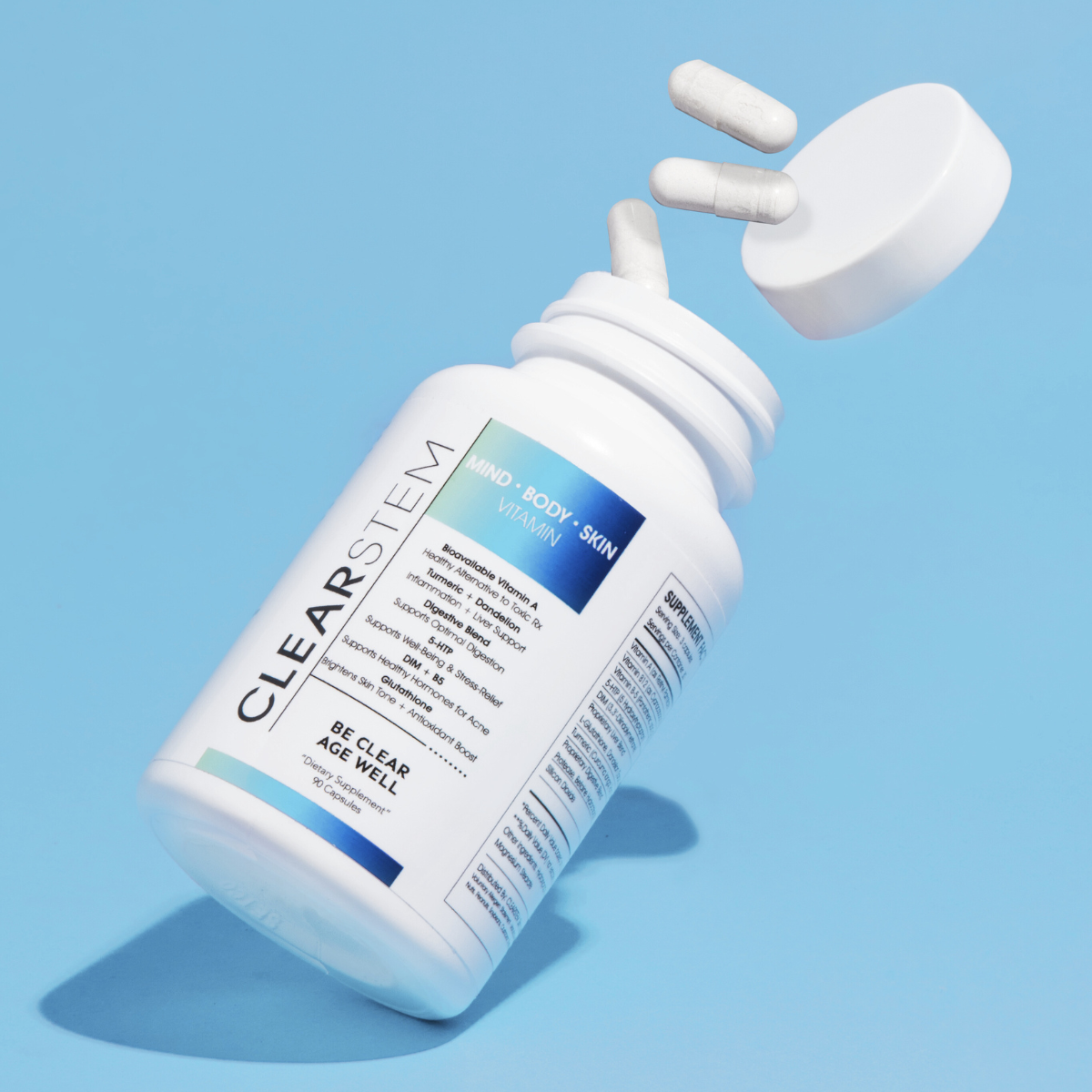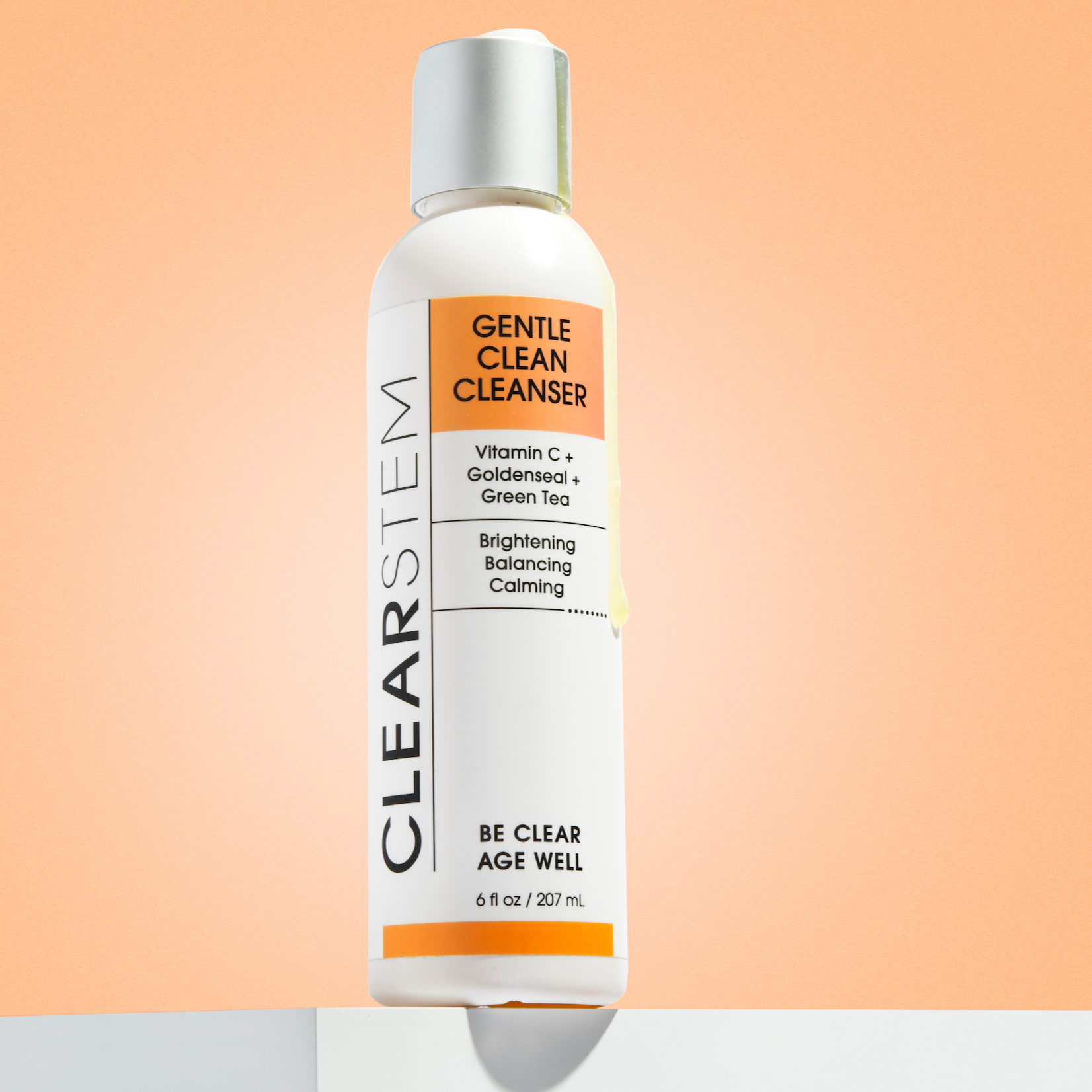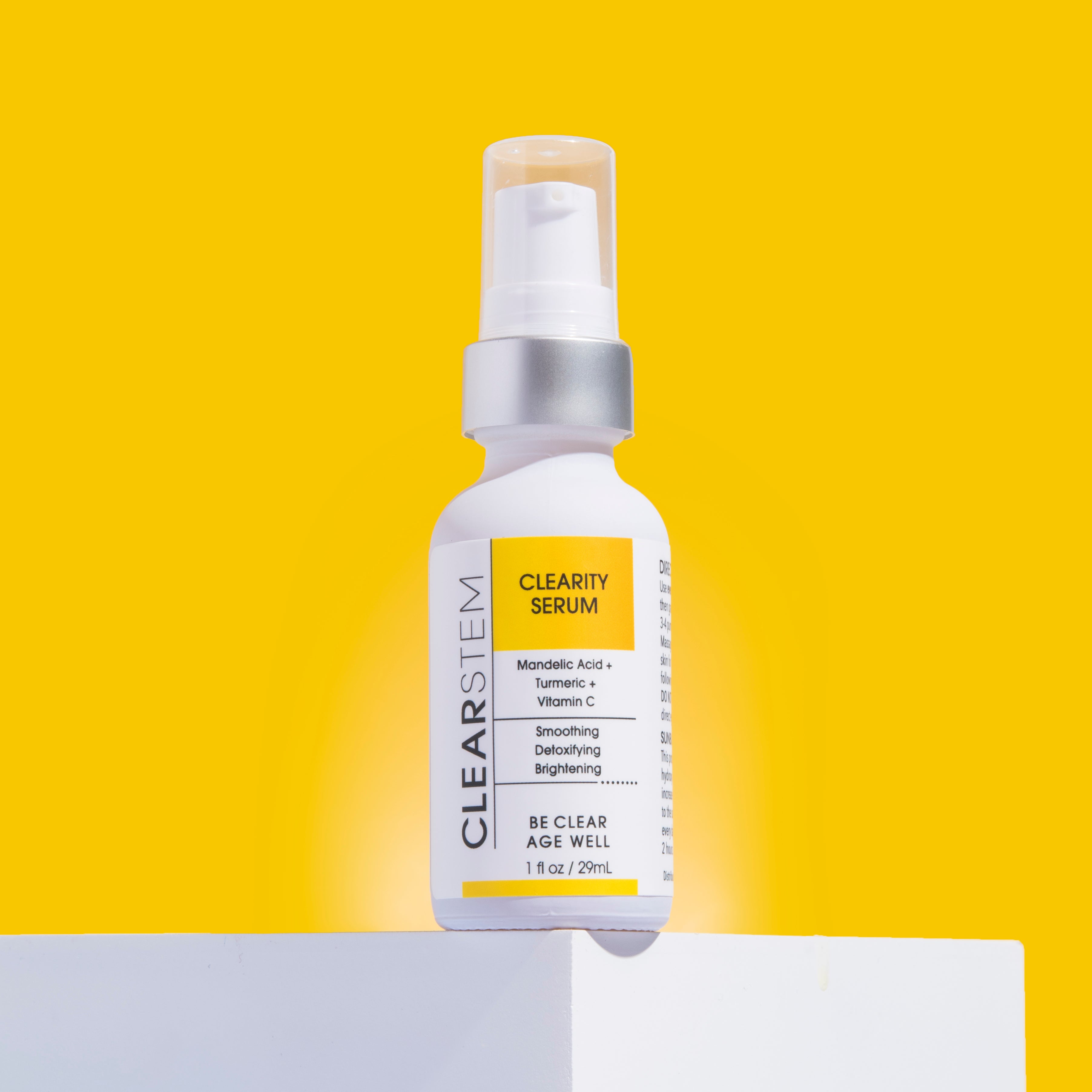Greetings friends! Hope this finds you well and that you are continuing to learn all about your skin with CLEARSTEM’s detailed content. As you know, the ENTIRE CLEARSTEM line is formulated to be both anti-acne AND anti-aging, because you shouldn’t have to choose between anti-aging products that break you out or acne products that wreck your skin. Both founders of this company, Danielle & Kayleigh, struggle with chronic acne and are health-obsessed, so our aim is to highlight all that you really need to know to understand and control your precious skin.
In this post we are going to go into detail about the FOUR leading causes of acne. Get ready for some answers to your acne questions.
GENETICS
Thank your parents (or not). Your skin was pre-determined by your genes and if you have acne, it’s because of a gene that tells our skin to over-produce keratin protein. Sometimes we produce over 5X more keratin than others. It’s called “Hyperkeratosis” (hyper = more). The excessive skin protein builds up in our pores and isn’t properly shed, thus leading to clogged pores. The solution to this is gentle daily exfoliation (check out the VITAMINscrub– it was designed just for this and is hands down one of the best acne products on the market).
This gene isn’t inherently a terrible thing; it does accelerate wound healing so back in the days before medicine we would heal faster from skin injuries, thus avoiding deadly infection. Evolutionarily we are at an advantage with our super fast skin-making ways. So take pride in being genetically superior to the freaks who never break out. (JK, we all have our struggles).
The other main genetic factor that influences acne is sebum (oil) production. Those of us who break out tend to be on the oilier side, and that oil mixes with the excess keratin protein which then forms clogged pores that lead to acne breakouts. Trust me when I tell you though- YOU WANT oil in your skin so you will age better. That’s facts. Ask anyone who’s over 60 and looks great for their age and they will tell you they had oily skin when they were younger. Here’s why: the “lipid barrier” that we all have is our first and best line of defense against UV damage. Dry skin tends to break out far less but it ages much faster, so enjoy that extra moisture- it’s doing great things for you in the long term.
PRO TIP: If you are excessively oily you’ll want to reduce your sugar intake and make sure you are not using hot water on your face- both of these will lead to extra oil production and more acne.
HORMONES
(& hormone imbalances) are the second biggest cause of acne. Hormonal acne is usually on the chin and lower half of the face where the most hair follicles exist. Hormonal acne can come from natural processes (like puberty and menstrual fluctuations) OR it can be caused by an outside force like an IUD, excessive amounts of Vitamin D, or stimulants. This topic is broad, so we will try to distill it.
The hormones that primarily affect acne are “androgens” (male hormones) like testosterone and DHT (dihydrotestosterone) but excessive amounts of progesterone can also lead to a flare up (like from a hormonal IUD or a progestin-based birth control pill).
Keeping your hormones healthy is imperative to overall mental, emotional, and physical health- that’s why the “clean beauty” space has taken off in recent years, and why we specifically formulate all products to be hormone-safe by avoiding all known toxins. The toxins found in personal care products are called “endocrine disruptors” which means they F with your natural hormones in a very disruptive way- mainly by kicking your own estrogen out of its place and leaving it floating around aimlessly in your body. The result is that the male hormones then become the dominant force acting upon your skin, leading to hormonal acne.
Hormonal acne is often caused by everyday supplements believe it or not. The most common are Vitamin D and B12. These nutrients are very important but when consumed in a supplement form, they often have way too much and the excess has a major impact on our hormones. It’s all about dosage and balance. The difference between a medicine and a poison in the dose. Example: Your multi has 250% of the daily recommended dose of Vitamin D. That’s 2.5X the amount you should be getting (and doesn’t factor in the other amounts you’re getting from other sources). Vitamin D happens to be fat soluble so it actually stores up in our system; the excessive amount is then compounding on itself day after day and before you know it, you have too much Vitamin D which spike testosterone. PRO TIP: If you’ve been getting too much Vitamin D from your supplement, stop taking it for about 2-3 weeks then restart by taking it twice per week. Pay close attention to your chin as this is the area that Vitamin D tends to affect.
Other common vitamins that affect testosterone in high doses are ginseng (nature’s viagra), B12 (stick to animal sources and supplement only if prescribed or if vegetarian), zinc (that’s why oysters are an aphrodisiac). There are benefits to each of these vitamins but again- dosage is everything!
PORE CLOGGERS IN SKINCARE
This is a particular source of frustration and inspiration to us here at CLEARSTEM. Both Kayleigh and Danielle struggled so long because of hidden pore cloggers in their skincare products, and these things are EVERYWHERE. Even in “organic skincare”, even in $200 items, the many pore-cloggers used is mind-blowing. We created a searchable list on our site for you to bookmark and use when evaluating your products at home. https://clearstemskincare.com/pages/pore-clogging-ingredients-list/
- The top 6 most common pore-clogging ingredients are:
- Coconut oil (& coconut alkanes)
- Soy
- Wheat
- Algae/Kelp/Seaweed
- Shea Butter
- Ethylhexyl Palmitate (mainly in makeup)
Why do companies use these? Well, their first goal is to extend shelf life and keep costs down. The first 5 mentioned are cheap, “natural”, and can stay on the shelf for a long time. Things like Ethylhexyl Palmitate and Isopropyl Myristate are oil derivatives that are even cheaper and last even longer.
PRO TIP: Most “organic skincare” products use some or all of these, and this will still lead to clogged pores and acne. The solution is to use the search tool we provided to go through all of your products & hair conditioner, stop using anything with pore-cloggers, and use a friendly acid serum like CLEARity to dissolve the material in the clogged pores. An acid is the fastest way to break down clogged pores as it dissolves the bonds between the skin protein and the oil substances from the products. Getting a facial with extractions from a Face Reality certified acne specialist is wise too- you can call them and get a referral for one in your area.
DIET
This is the easiest thing to control, and has a HUGE impact on your skin!
Step 1: Eliminate all dairy until your skin is behaving again. This is tough, we know, but it matters BIG TIME. Dairy has Insulin-Like Growth Factor hormones in it which lead to hormonal acne within a day. It’s that strong. We recommend an elimination diet- so cut out ALL dairy for about 1 month and then reintroduce it to reestablish your threshold. You’ll want to pay attention to your chin (the corners of the mouth and down, where you’d have a goatee). This is the dairy zone and you can watch for the effects here. The point is to make choices (ex: “Is this cheap slice of American on my burger worth breaking out for? Meh. Is this aged Roquefort blue cheese flown in from France worth it? Probably.) It’s about YOU having control and knowing what you can get away with.
Step 2. Greatly reduce eggs if you have acne on the perimeter of your face (temples, cheeks) or underneath in the lymphatic area (under the neck). Eggs have a high amount of progesterone AND the protein in the whites (albumin) is very hard to digest, which clogs up our lymphatic pathways and equals high skin inflammation.
Step 3. Save sugar for times when you already have protein in your system (an acai bowl for breakfast is way too sugary and will spike your blood sugar). When your blood sugar spikes drastically it immediately leads to more oil production and more bacteria. Follow the Low Glycemic Diet to easily regulate your blood sugar and check out our Nutrition page for more detailed recommendations on the best acne diet and the best diet tips for hormonal acne: https://clearstemskincare.com/skin-nutrition-anti-acne-diet/
Step 4. Hydrate! This is the easiest! 3 Liters of water per day is ideal, it’s totally achievable and will set you up for optimal detoxification by keeping the lymphatic system flowing. Remember that caffeine and alcohol dehydrate us, so plan for extra water intake. PRO TIP: switch from coffee (which is acidic and has no nutritional value) to green tea! You’ll get far more bang for your caffeine buck and you’ll be helping your skin rather than annoying it.
Step 5. Avoid soy & other processed foods. When our digestive system is tasked with breaking down unnatural foods it creates inflammation and affects our entire body. What happens inside the tummy affects everything else, including acne. Excessive soy will lead to hormonal acne, while processed foods can lead to toxicity and hormonal imbalance. Stick to local, organic foods with names you can pronounce.
PRO TIP: Try to stop eating at least 2 hours before bedtime for optimal digestion. This will help keep your lymphatic system clearer and reduce acidity in the body.
These acne diet tips make all the difference if you are struggling with any acne, whether it’s hormonal acne or caused by products.
For more detailed info on these specific topics we encourage you to read our other blog posts and really explore our website! You are always welcome to reach out to us at: hello@clearstemskincare.com
Cheers,
Danielle & Kayleigh









